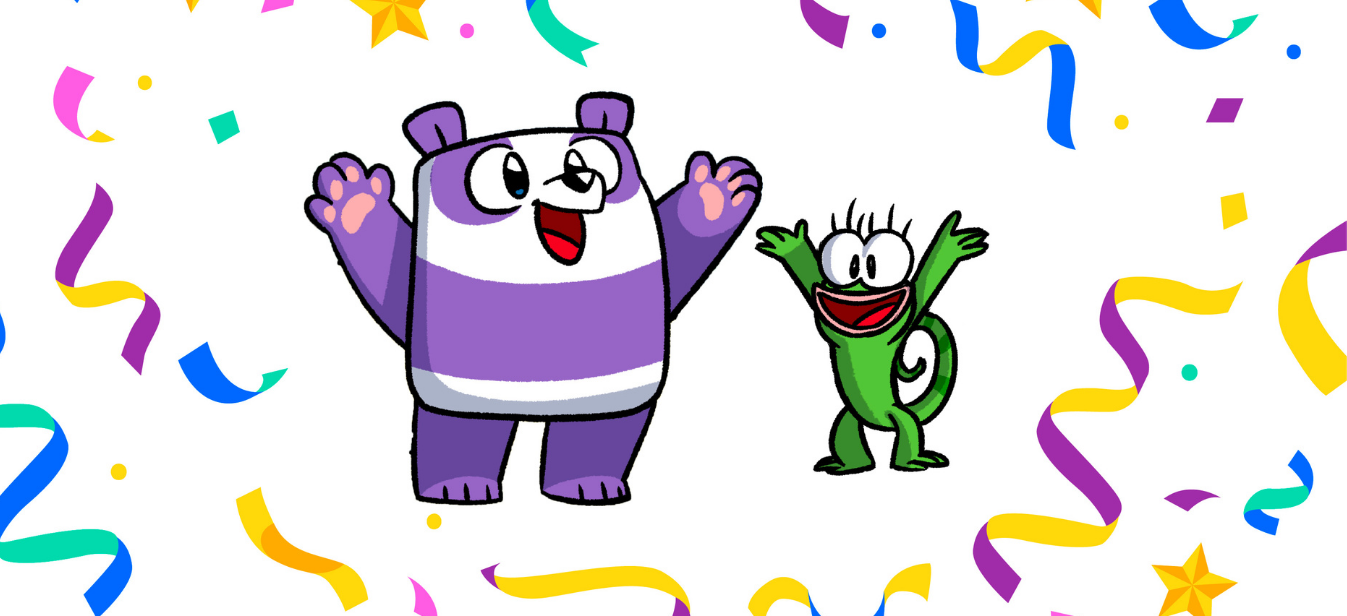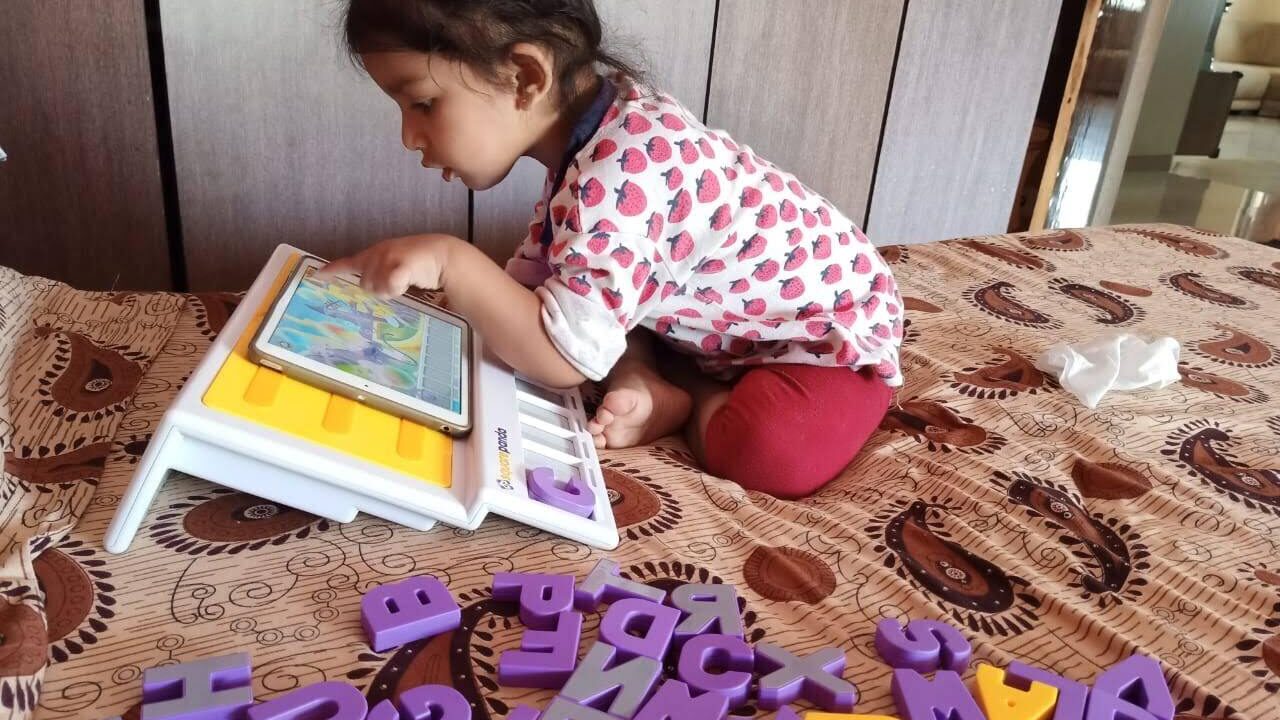
 That’s why so much of early education is play alongside learning. Research supports the ‘learning through play’ method, with esteemed psychologist Lev Vygotsky, in his article, Play And Its Role In The Mental Development Of The Child, examining the different components of play and the way they affect a little learner’s just-developing mental functions, and thus concluding that play might not be the primary activity, but, in a certain way, it is the main reason for a child’s development in the preschool years.
*At the time Vygotsky conducted his research, in Russia, formal schooling started around the age of 7. So it is fair to include both preschoolers and kindergarteners in his findings.
**Vygotsky only looked at play in terms of role-play (kids putting themselves in imaginary situations, kids taking on and acting out roles, and following a set of rules determined by that role).
If you need more reasons to convince you learning through play is essential, read on…
1) Play Develops Their Senses: An educational game succeeds in stimulating a young learner’s senses the way simple learning cannot. Using props and educational toys that encourage kids to use multiple senses, including tactile ones, enhances their retention and learning.
That’s why so much of early education is play alongside learning. Research supports the ‘learning through play’ method, with esteemed psychologist Lev Vygotsky, in his article, Play And Its Role In The Mental Development Of The Child, examining the different components of play and the way they affect a little learner’s just-developing mental functions, and thus concluding that play might not be the primary activity, but, in a certain way, it is the main reason for a child’s development in the preschool years.
*At the time Vygotsky conducted his research, in Russia, formal schooling started around the age of 7. So it is fair to include both preschoolers and kindergarteners in his findings.
**Vygotsky only looked at play in terms of role-play (kids putting themselves in imaginary situations, kids taking on and acting out roles, and following a set of rules determined by that role).
If you need more reasons to convince you learning through play is essential, read on…
1) Play Develops Their Senses: An educational game succeeds in stimulating a young learner’s senses the way simple learning cannot. Using props and educational toys that encourage kids to use multiple senses, including tactile ones, enhances their retention and learning.
 2) Play Helps Power Their Mind: Imagine a large battery which you can plug, and voila, your kids’ brains are that much smarter. A learning game is exactly that battery, sparking more engagement and learning in a beginner learner’s mind. Not only are their cognitive skills much more developed, they also exhibit signs of critical thinking, and can understand cause and effect.
3) Learning Games Prompt Physical Play: Not every educational game has users sit passively to learn; the ones catering to a younger audience almost always incorporate an element of kinesthetic learning-whether it is dancing, or singing, or simply getting up and moving around. Boosting large and small motor skills, these games are perfect for added reinforcement of regular learning.
4) Games Boost Creativity: When kids play a learning game, their minds are almost always actively engaged. Whether it is the animated gameplay or the engaging activities in each game, young learners can explore and expand their minds to a greater extent.
2) Play Helps Power Their Mind: Imagine a large battery which you can plug, and voila, your kids’ brains are that much smarter. A learning game is exactly that battery, sparking more engagement and learning in a beginner learner’s mind. Not only are their cognitive skills much more developed, they also exhibit signs of critical thinking, and can understand cause and effect.
3) Learning Games Prompt Physical Play: Not every educational game has users sit passively to learn; the ones catering to a younger audience almost always incorporate an element of kinesthetic learning-whether it is dancing, or singing, or simply getting up and moving around. Boosting large and small motor skills, these games are perfect for added reinforcement of regular learning.
4) Games Boost Creativity: When kids play a learning game, their minds are almost always actively engaged. Whether it is the animated gameplay or the engaging activities in each game, young learners can explore and expand their minds to a greater extent.

Did you know the Square Panda Lagoon game encourages early learners to explore and experiment with making words?
5) Games Are A Confidence Booster: There is a tiny frown of concentration on your kid’s face, which clears away as soon as she realises the letter she was trying to identify is, in fact, the letter ‘A’. The more she gets answers and concepts right, the higher her confidence soars. The bite-sized lessons masquerading as games, and the colourful components both serve to make education simpler and a lot more fun. Finding this stimulating, kids’ success rates increase, which in turn raises their confidence in themselves and their learning ability. 6) Playing Games Helps Kids Play Well With Others: Whether in school or at home, playing these educational games have a positive effect on children’s social and emotional well-being. Playing these games (and sometimes losing) helps them with their emotional maturity; because they are pushed to interact with people—friends, peers, adults around them—these games can also develop their social skills. All this interaction has the added benefit of improving kids’ communication skills as well. Playing, Learning, And The World: Governments around the world have started to recognise and acknowledge the importance of learning through play, and are taking steps (strides, in some countries), to incorporate a ‘play’ element for their young.
Playing, Learning, And The World: Governments around the world have started to recognise and acknowledge the importance of learning through play, and are taking steps (strides, in some countries), to incorporate a ‘play’ element for their young.
- Early childhood development was studied as early as the 1980s, with a study being conducted on children in an underprivileged Kingston neighbourhood in Jamaica. Mothers were taught to interact and bond with their children via play, by community health workers. Focused on reducing developmental delays in at-risk kids, this program was found to have a great effect on the earnings of those kids as adults.
- A global experiment was conducted by BRAC, the world’s largest NGO, to bring play to the world’s most underprivileged communities. Derived from BRAC’s 40 years of building schools for the at-risk members of Bangladeshi society, this program’s curriculum was created by a team of global scholars. Faced with stiff opposition in many communities who feel the ‘play and learn’ model is frivolous and cannot add value to learning, they soon change their minds when they see the results of such play in their now skilled and cognitively-developed children.
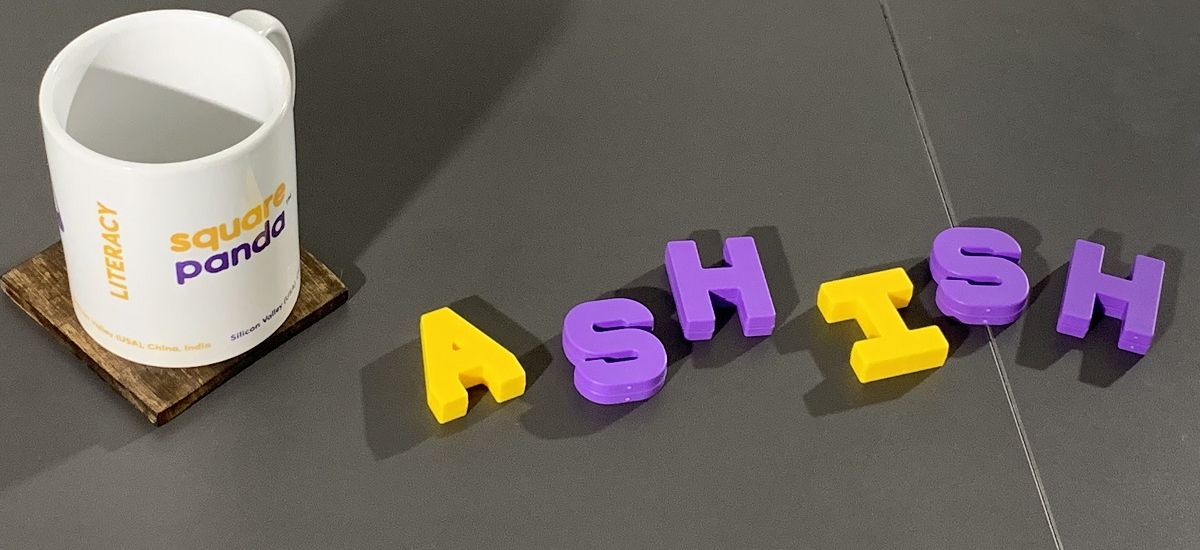
He’s got an impressive 24+ years of experience, in multiple disciplines, no less, under his belt. The shot caller at Square Panda India, he was recently promoted to Global CTO.
He is passionate about his family, basketball, and making a social impact.
Introducing our MD and Global CTO, Ashish Jhalani, who very kindly agreed to sit down with us for a special interview, where he divulges details about his journey to Square Panda, early education, and his favourite character from our games.

Watch the interview here, or read the transcript below:
FROM ECOMMERCE TO EDUCATION. WHAT INSPIRED THAT TRANSITION?
“I spent almost all my life in the e-commerce field since I first started working. Transferring to education was a big decision, but it kind of comes down to wanting to do something more than just build businesses and have an impact on a very little number of people. Here in education, it gives me an opportunity to impact millions of kids, especially here at Square Panda, with us having a presence in the US, in China, and in India, and then obviously, in each one of these countries there are millions of kids that are in need of literacy, and it gives me an opportunity to reach to all of those kids. So yeah, it is more of a social kind of a move at this point. You want to make an impact and not just build businesses, but here, it gives me an opportunity to do both.”
WOULD YOU HAVE USED SQUARE PANDA, HAD IT BEEN AVAILABLE WHEN YOUR CHILDREN WERE YOUNGER? WHAT INFLUENCES YOUR DECISION EITHER WAY?
“At first, challenges: would I want screen time for them? NO! Or yes. But if we looked at the product, I think I would want to use it for my kids. One, because I was a second language learner, my wife was a second language learner, and we wanted our children to obviously learn better than we did. So, I think I would have chosen Square Panda as one of the products for my children to learn from. I myself used different tools initially to learn English, so I think I would use something for my kids as well.”
AI (ARTIFICIAL INTELLIGENCE) AND MI (MACHINE LEARNING), THESE TERMS ARE NOW BEING USED IN THE MOST IMPORTANT OF ALL SPHERES, EDUCATION. HOW DOES SQUARE PANDA TAKE ADVANTAGE OF THIS TREND?
“AI and MI are hot topics at this point, be it education or finance. But in education, specially, we are talking about how can AI and MI help. Here at Square Panda, we take ‘first steps’ (referencing the fact that our educational games create a foundation to language learning and early literacy); all of our games are adaptive games. As children are playing these games and learning, each child learns differently. So if your child is making a mistake with a certain letter, word, etc., we recognise that. Obviously, our games ensure that the child has enough practice and enough repetition to learn that particular issue that they were having. That’s just one step. As we build our products further, we are building more algorithms to understand the demographics of the child, to understand what their patterns of learning are, and have them integrated against the new products, the new games, and the new curriculums that we are building up.”
WHAT IS THE SQUARE PANDA MISSION STATEMENT?
“Our mission here at Square Panda is very simple. We want to empower all kids with the power of literacy. We want every child to have education, we want every child to learn a language, and a language that is common across the globe.”
WHAT ARE THE GOALS SQUARE PANDA HAS?
“The goals Square Panda has is to make education and literacy, affordable and reachable to the masses across the world, may it be in China, may it be in India. We want to make sure that every child gets an opportunity to be literate, learn the language of English—which is a primary language across the world—and find better jobs as they grow up.”
WHO IS YOUR FAVOURITE CHARACTER FROM OUR GAMES?

“My favourite character in our games is obviously Square Panda. He has got this unique thing–pandas are never square, but he is square…and I like that. So, yeah, my favourite character is Square Panda.”
WHAT SETS SQUARE PANDA APART FROM OTHER EARLY LEARNING SYSTEMS?

“What sets us apart at Square Panda is realistically, our ability to be adaptive. Like I said, every child learns differently. That’s what Square Panda is all about. Now, obviously, we have many other important aspects too, but what differentiates us; one being ‘multisensory’. Our playset is unique in what it offers. It gives the child (the ability) to still continue to develop motor skills, etc. while using the digital adaptive platform. Now, let’s not discount the amount of research that has gone into building our curriculum. Though the user is seeing the games, the children playing it interact with the game, there is a large amount of curriculum that helps them learn, and there are learning goals for everything that the child is doing in our games.
What sets Square Panda apart in most cases is the innovation we bring. We currently have our meta game out—‘SquareLand’—where we are continuously adding more interactions, more engagements to the product, where we can complete the learning goals of each early learner. In addition to that, we have products such as ‘Buddy Reader’ that is coming out that will help children read better. In the future, we have other products that will help the child complete their full cycle of learning–from reading, to writing and recognising letters, etc. So, Square Panda is an innovative company; we are going to constantly be innovating new things. Not everything can be talked about, but there are things that are continuously in the pipeline to be introduced to the markets in India, in China, and in the US.”
Like, Share, and Follow us on Instagram, Facebook, Twitter, LinkedIn, and YouTube!
Check out our website for more articles, videos, and educational games!
– Sanjana Shukla, Content Writer, Square Panda India
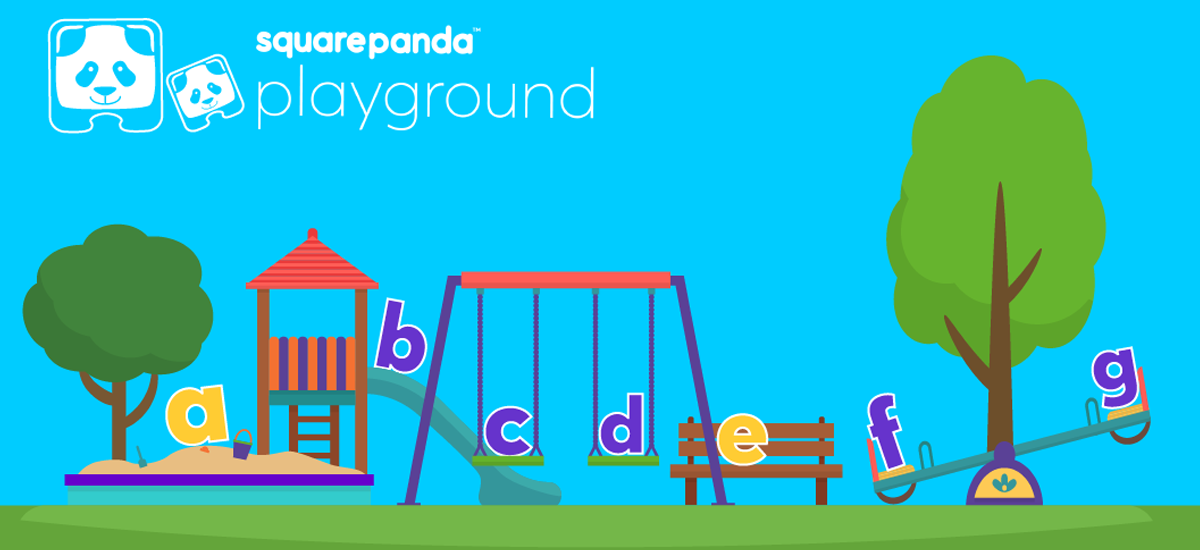
Managing children’s progress is tiresome. It requires a considerable time and effort to track and analyse growth. In today’s times, early literacy matters, multiple educators and parents are seeking methods for more productive child experience.
In the quest for good school records, often parents and teachers neglect and ignore their children early educational needs. Scorning the child’s requirement will not help in any manner. Every child wants a special treatment or learning tool to support them. Using interactive early learning games promotes’ self-learning and motivates the kids’ to learn to read.
Square Panda’s Playground is a digital foundation for successful early literacy and language management. It has multisensory instructions, which triggers the young brains to process information; it gains deeper cognition and strengthens the little learner’s levels.
A blend of tactile letters combined with a multisensory experience uses different senses; enhances learning through play. It aids the curriculum milestones and goals in each of the classic legacy games. These mini-games adapt to the learner’s level and make them well-versed of phonological awareness, phonics, spelling, builds vocabulary and much more. Here the students achieve endless engagement, reiteration and exposure to early literacy.
Square Panda has a backbone of a deep neuroscience-based researched approach. The Teachers and Parents’ Evaluation Portal is an innovative and adaptive platform syncronised with current learning levels. Learn how to turn your average learners into smarter thinkers using Square Panda Games. Discover the ‘Playground’ and bring forward the key to successful learning.
AMAZING THINGS YOU’LL FIND IN THE SQUARE PANDA PLAYGROUND:
-
- Teachers can explore the players i.e. students, customise their account, add more players, discover the badges and suggest words.
- Square Panda’s Word Bank gives an opportunity to expand children’s vocabulary.
- The average volume of the words in the bank:
-Real word dictionary: 58k+ real words.
-Phonemic dictionary: 85k+ real/nonsense or silly words pronunciations. - Teaching aids like flashcards, storybooks and workbooks will quicken the learning process.
- Give them access to our open-ended exploratory play.
- Add customise words and pictures into a child’s personalised, and private database.
- New Classroom playset comes with a built-in ‘QR Code’, which allows quick scan.
- Badges: Easily track the children’s accomplishments across each Square Panda’s game level and watch the badges fill with color as they enter words in different milestones.
- Big Badges: It consists of detailed progress mapping for each curriculum milestone.
- Mini Badges: The child earns mini badges when they spell- name, numbers and words correctly.
- View words list and letter history. Discover every word your students have spelt the most across Square Panda learning games.
- The word list consists of:
- Real words played
- Nonsense words played
- Letters that the child played
- Letter orientation
- Letter mixups and areas of confusion
- Use easy-to-read reports to track and trace students’ milestones progress.
- Administrators can check their students time spent, the fidelity of implementation and give a real-time assessment in the form of feedback.
- Lost Letter: Missing a few letters? Simply report them here, and the games will react intelligently, so the children can continue to learn to play.
- Access the NewsFeed: It helps to stay plugged to all the latest updates in early education and literacy.
LISTEN TO SQUARE PANDA’S CO-FOUNDER- ANDY BUTLER AS HE UNCOVERS THE SECRETS OF OUR ‘PORTAL’.
GIVE THEM POSITIVE REINFORCEMENT:
Square Panda has a distinct administrators’ portal where they can control over the deployment within the classroom. Educators can measure their students progress with a multivariable grid of phonics skills. The reports provide a window into the students progress. It helps in boosting a positive screen time with educational elements.
HERE ARE SOME QUICK STEPS TO LOGIN THE PORTAL:
THE PARENTS PORTAL VIDEO:
THE TEACHERS PORTAL VIDEO:
Parents and Teachers can take full charge of the playground via a portal. Using their login id and password they can access every element to make early learning fun. The playground has coupled language learning with a sequence program to nurture and polish the children skills. Learning through play gives children the ability to experience the best of both worlds.
Now convert your kids’ reading time into fun time with Square Panda’s Playset and keep unproductivity at bay.
Want to become a Square Panda-Powered School? Connect with us via LinkedIn.
–Nidhi Parikh, SEO Content Writer, Square Panda India
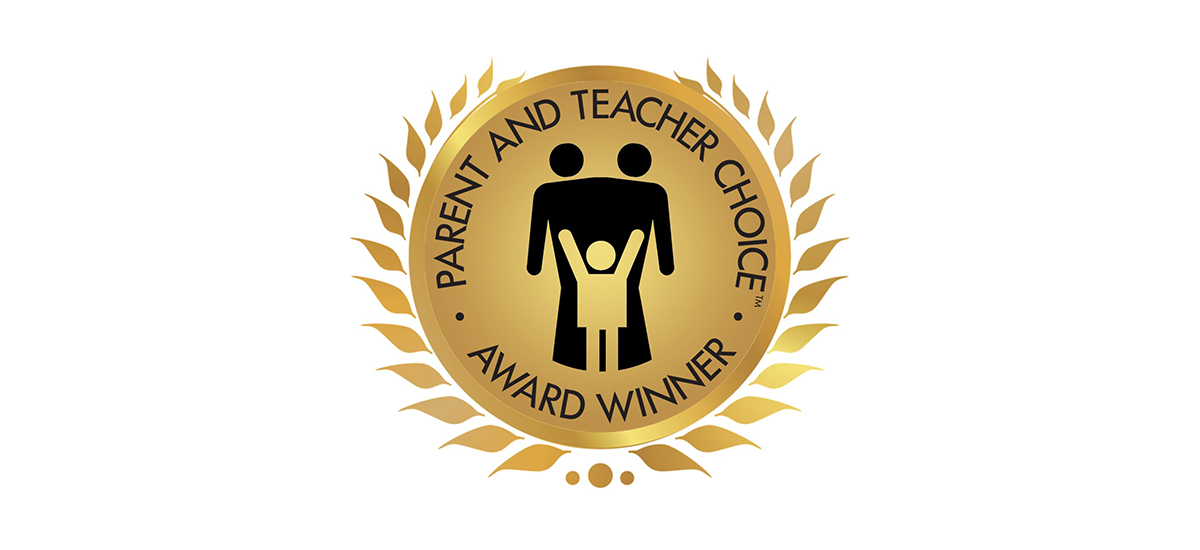
We are extremely proud to tell you that we’ve won the ‘Parent And Teacher Choice Award‘ for 2019! Bestowed on us by a website that has been active longer than Google (!)–the website, HowToLearn.com, was started in 1996, while Google began in 1998–we were unanimously selected as the best early education system because of our “unique multisensory methods of teaching reading, as well as a library of games that truly engage the learners”.

About HowToLearn.com: This website went live two years before Google did, and is still kicking, successfully connecting parents, teachers, educators, and even resellers, with the best educational resources to enhance learning. Companies interested in boosting their online profile can throw their hat in the ring and enter their names. The best of the lot (like us!) will be chosen as the winner by a jury of parents and teachers, who base their decision on proven results, creativity, innovation, and the brain-building abilities of said company.
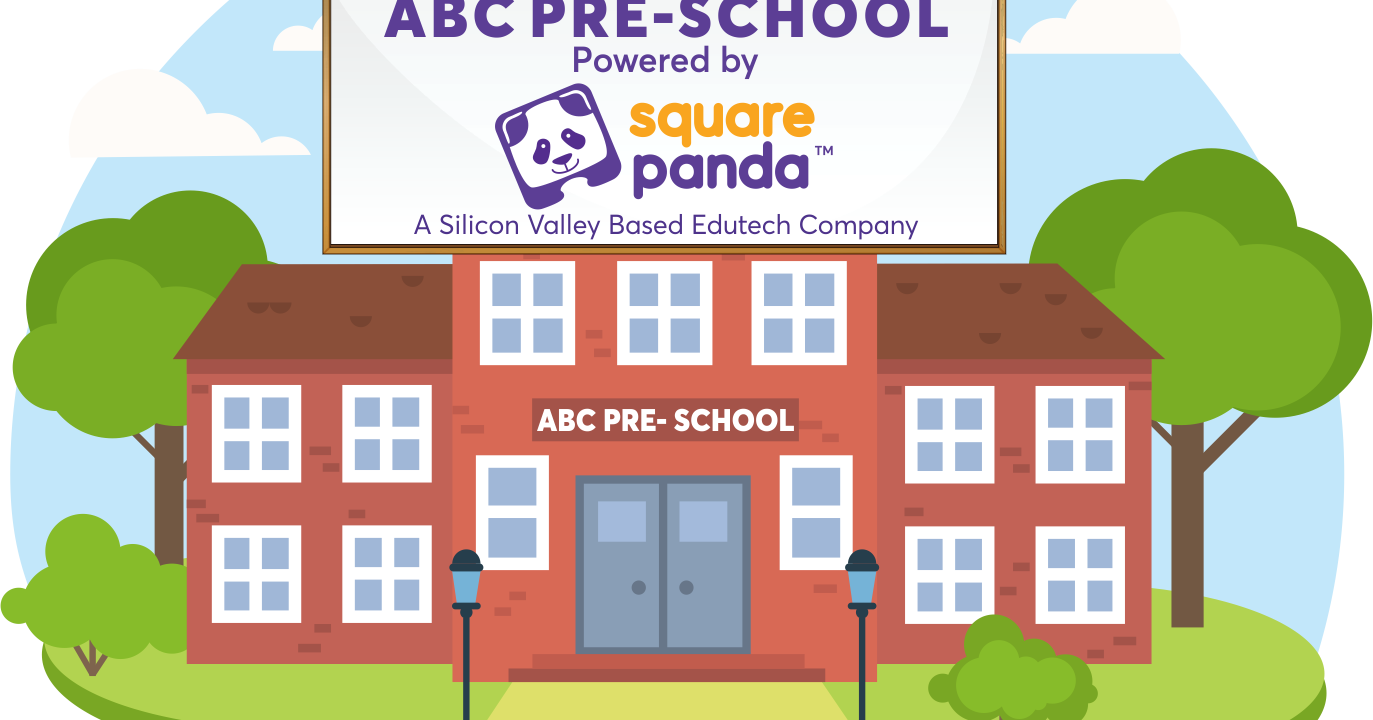
The first day back to school after a happy sunny summer vacation can be daunting for kids. Make sure you have everything they need; use our back-to-school guide for inspiration:

Back-To-School Parent’s Edition
– Keep up the summer learning, especially for younger learners. You don’t want your kids experiencing the ‘summer slide‘ as it is called, also the phenomenon of losing a portion of knowledge during the months of summer vacation. To keep up their skills and knowledge, introduce a portion of learning every day. Keep it simple–have them practice their name, say your phone number, correctly identify shapes and numbers.
Hint: Here’s how you can mix in fun even during summer learning…

– Offer to help. Touch base with the authorities in charge at your child’s school and ask if you can donate:
-
- Your time (volunteer to be a part of some school committee)
-
- Your money (which can be used for new school equipment)
- Your efforts (in the form of suggestions for new educational products, new suggestions, and more)
Schools will never say no to a helping hand.
– Make your child a goodie bag. Everyone loves a present.Hand over a brand-new item they can show off to friends, and your kid is grateful for life (or at least until the next week, when they think of something else they want). This goodie bag does not have to be extravagant or expensive; you can fill it up with cute new sunglasses, clay dough, new pencils and crayons, glue, even the goodie bag itself can all be potential ‘back-to-school’ gifts for your child.

Image by ALI TOMA from Pixabay
Back-To-School Teacher’s Edition
– ‘Theme’ up your classroom. Welcome your kids to school by decorating the classroom in a particular style–you can pick a place like the circus or the beach, fun movies like the Avengers, and even funny songs or rhymes. Choose one that you know your students will enjoy and watch their faces light up with happiness.
For example: For the theme ‘Jungle Book’, you can place cutouts of plants and trees around the classroom (or actual potted plants, if allowed), green streamers to resemble creepers, pictures of jungle animals around the desks, and random students can be Mowgli, Baloo, and Bagheera. You can even have them sing and dance to songs from the movie.

Image Source: https://bit.ly/2EGfMv4
– Break the ice between kids, again. They were best friends for a whole year, and then came their vacation. Maybe they play together, maybe not. Either way, get your students bonding again by group activities like sitting in a circle and saying what they did in the summer, or making them all special badges. Help them feel connected to each other, and the year will pass smoothly.

– Load their first day back (or even first few days back, if you can work it into the curriculum), with enjoyable activities like painting, drawing, or playing some type of learning games.

*check out our Instagram feed to see how introducing exciting educational games in the classroom magically reduces your students’ first day jitters.

Preparing kids to go back to school can be challenging (for you and them), but with enough preparation, you can make it through with flying colours!
Share your tips and tricks to getting kids ‘back-to-school’ ready; hit the comment section below!
– Sanjana Shukla, Content Writer, Square Panda India

They come every year, without fail. As the weather turns from cool to hot, you lose almost half your body weight in perspiration.
You can heap curses on the weather gods for turning the heat up, you can even dream of taking a leave off work to stay home under the sweet embrace of your fans and ACs. Of course, all these heat-related woes will be nothing compared to your children’s/students’ disappointed faces if you haven’t managed to pack their vacation with as many fun summer activities as possible.

Image by Adina Voicu from Pixabay
We understand and sympathise with your time constraints, which is why we have compiled the following list of summer activities for kids to try out this summer:
Check out our comic strip on how to stay safe in summer before you take on these activities.


Check out all our comics on our Facebook or Instagram.
#1: Pool Time:
A nice refreshing dip in cool water sounds like heaven, doesn’t it? Try out some local swimming pools. Or take your kids on trips to places with pools/lakes. For a cheaper alternative, introduce bubble baths. You can make it more interesting by adding a ‘story’ element to the bath. Teachers, grab a hose! After all, water is still water.
#2: Mango Is King:
Who doesn’t love a sweet, juicy mango? Feed them mangoes (in moderation). Teach them easy, kid-friendly recipes incorporating mangoes, because it is never to early to learn to cook. Parents, you get a kitchen helper, and teachers, you get a parent’s eternal gratitude and devotion.

#3: Hobbies Need Time Too:
Playing with friends, practicing a sport, reading, or even lazing around; give all activities that your kids enjoy enough time. In fact, you can create a specially ‘curated’ list of activities for kids this summer, based on what they enjoy. We also recommend adding a small element of learning into summer fun, because we hate to see children experience the ‘summer slide’.
#4: Screen Time Can Be Healthy Too:
Not all screen time is bad. Choosing to let kids play-learn with educational games like ours, which are based on research and have proven results, can greatly help increase and enhance their knowledge. You can even spend some time finding resources on free streaming sites like YouTube, which is chock-full of educational videos on learning everything from numbers to nursery rhymes.

Stay tuned for more on why we think screen time with Square Panda is educationally beneficial…
Which activities are you leaning towards? Write to us in the comment section below.
– Sanjana Shukla, Content Writer, Square Panda India
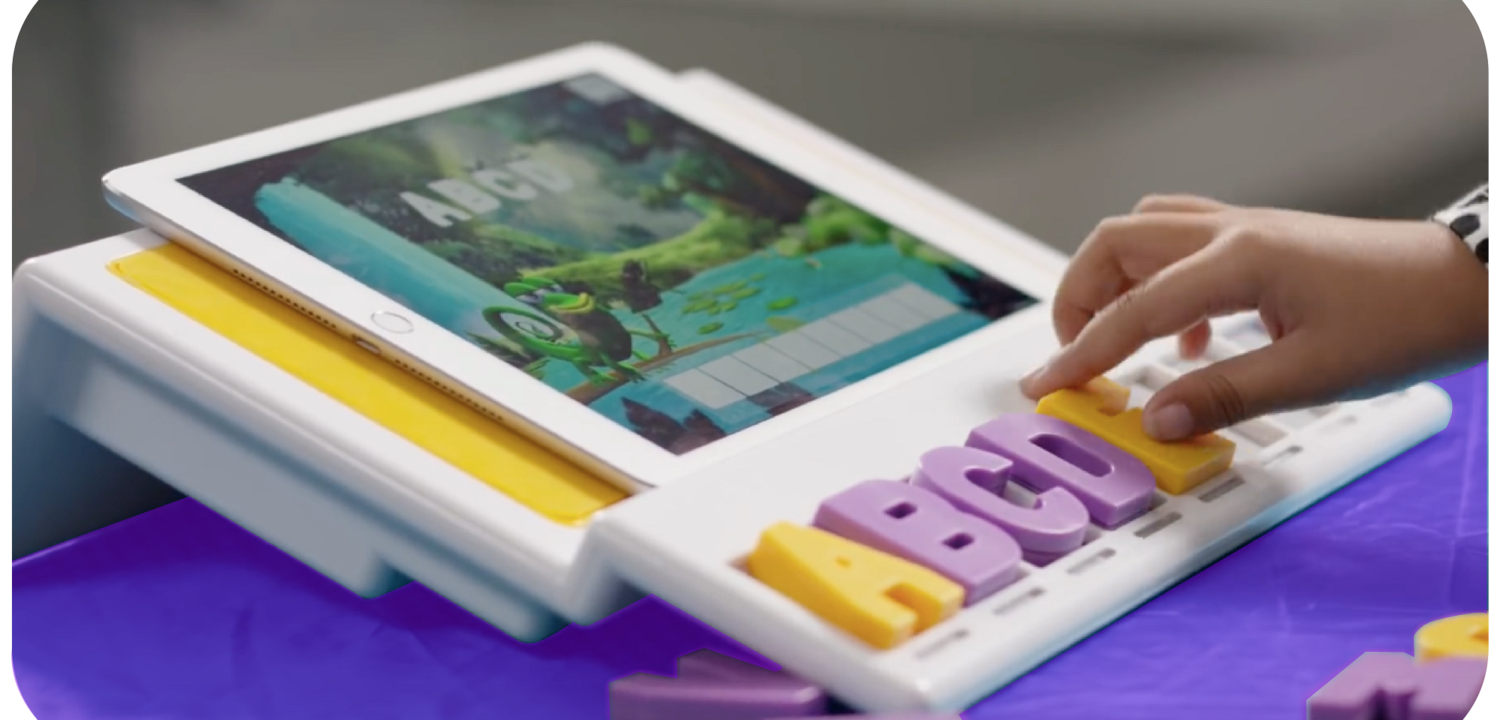
When I say the word ‘game’, what image comes to mind?
Is it a video game, complete with players in headsets blasting away at imaginary enemies?
Or do you go more old-school and imagine a rousing game of cricket or football?
What was previously strictly in the ‘fun’ category is now slowly entering the educational sector, with more and more schools globally adopting educational games into their curriculum. Serving as an aid and prop, these educational games explain concepts simple and complicated, reinforce learning, and give the teachers some much needed spare time while in the classroom.

We believe schools in India can benefit from this trend of using educational games as teaching aids too…here’s why:
Fact #1: If You Can’t Beat Them, Find A Way To Productively Join Them
There’s no way to escape ‘screen time’ or the time a person spends in front of the screen (which is 6 hours per day, on an average). Devices have infiltrated every aspect of our lives, and shows no signs of stopping. Introducing educational games will have dual benefits—your students are turning screen time into learning time, and this also serves to increase their digital literacy. Additionally, students will be better equipped for learning when their private lives are filled with similar media.
Fact #2: ‘Funning’ Up The Learning Process
Whether it is adding some new life to your classroom, or just trying to keep the students engaged, educational games can come to your rescue. Long experience has taught us that beginner learners acquire faster when taught through play. Adding an educational game to your existing aids mixes that fresh element of fun to the learning process.

Liked this image? Check out more on our Instagram and Facebook pages.
Fact #3: Fail ‘Safely’
These kinds of educational games rarely have any punishment for incorrect answers, at least not the traditional kind. The are mostly programmed to give out positive feedback even if learners are making mistakes. This feature ultimately boosts students’ confidence by having them ‘fail’ safely. Also, a “Whoops, try again!”, sounds so nice when it is coming from a cuddly little animated character, doesn’t it?

Fact #4: The Reward System Gets An Upgrade
Straying away from the traditional means of rewarding students, educational games give out bonus points, unlock new levels, and more, for well-performing students. This added motivation can enhance stimulation and engagement like little else can.
Fact #5: There Is Safety In This Game
It’s an educational game whose target audience is not allowed to cross the street by themselves; they cannot afford even a whisper that their game is an unsafe environment for kids. Most such games undertake very stringent measures to guarantee a safe and controlled playing space for users. Of course, we recommend taking the game(s) for a test drive before introducing them in your classrooms.
Psst, Square Panda offers a completely safe and ad-free environment for kids as they learn the English language.
Fact #6: Supercharged Learning
Educational games for kids are often an all-in-one kind of buffet, reinforcing many of the essential skills taught in the classroom, like social and emotional skills, fine and gross motor development, and more. Information taken in here is not static and one-dimensional, but constantly changing and interactive.

Fact #7: Instant Feedback
Learners get feedback on correct or incorrect words instantly. Teachers, too, get their students’ progress relayed to them as their charges are playing.
Fact #8: Learning To Learn
Children need to know learning is more than just rote memorization of facts and concepts. With educational games, they have an increased chance to fall in love with learning. These games show children a different way to learn, challenging their brain constantly, using different ways to train them in the subject, increasing their all-round development and problem-solving skills.
Fact #9: What Gap?
Research shows children from upper income households often produce better results than children from lower income households. Schools can do their part to reduce the gap by incorporating an educational game into the curriculum. Each child gets equal playing time, constant repetition and subsequent reinforcement of essential concepts.
Like anything else, there are challenges to using educational games in the classroom—teachers have to know the game before they can teach students to learn with it, there might not be sufficient resources to get this technology into the school, and integrating the game with the existing lessons. Square Panda anticipated this problem and provides teacher resources, along with a lesson plan suggestions, to ensure smooth implementation of its educational games in teaching. You can also browse through our game page, which gives you a glimpse into our amazing array of learning games for toddlers and kids aged 2-8.
So are you ‘game’ to try this new teaching assistant? Share your views with us! Which kind of learning game would you prefer in your classroom?
– Sanjana Shukla, Content Writer, Square Panda India

Isn’t it funny how a wrinkled, pink organ that weighs only about 1.3 gms (approximately 2% of your body weight) is the deciding factor in almost every activity you perform?

Image by OpenClipart-Vectors from Pixabay
Guiding most of your behaviour, this complex organ is the nexus of all learning, meaning we spend a lot of time trying to shape this organ to perform optimally.
Beginning at inception itself, the brain is given high priority, and is nourished with a constant diet of ‘brainfood’, educational stimulation, and an enriching environment.
Then begins formal education, specially designed to mould young minds into the future. You, the educators, give everything you have to sculpt accomplished and fully functioning adult minds from the current juvenile brains you have been entrusted with.
Unfortunately, you cannot know which tactic is working, and which one is failing dreadfully. You cannot possibly measure the effect your teaching has on an impressionable young learner.
Square Panda is very aware that educators all over face the same issue, and so, conducted our own research (see our core team here) and referenced data from experts in the same field. We created a curriculum that is based on those findings, and came up with a learning system that focuses on training an early learner in language acquisition using the most optimal learning styles possible.

To help you understand the research that went into creating the Square Panda phonics learning platform, we compiled all our findings on neuroscience and the early learner:
To read about the early learner’s reading brain, view our previous post.
1) The human brain has no natural correspondence between the spoken language and print concepts (writing). New functional connections need to be formed between the visual and the language systems. (Dehaene, & Cohen, 2007)

2) Kids benefit the most from a systematic instruction that will help them:
- Become aware of the sound structure of syllables (phonology)
- Isolate the units (phonemes) within syllables
- Identify which letters go with which phonemes
- Blend letter sounds together into words
- Use multisensory cues during learning

3) The above benefits multiply when children are taught these skills at an early age.
4) Studies have shown that specialised brain regions integrate each letter with its respective speech sound; these regions are especially active when this letter and its sound are presented in a multisensory fashion. (Van Atteveldt et al., 2004; Blau et al., 2009; Blau et al., 2010)
5) The research team led by Stanford University neuroscience researcher (who partners with Square Panda), Dr. Bruce McCandliss, said that the rapid brain response to newly learnt words were influenced by the way they were learnt. Words that were learnt through letter-sound instruction showed neural activity in the left side of the brain, the part of the brain that encompasses the visual and language regions.
6) Systematic phonics instruction is much more effective in grades PreK-1 than in later grades and leads to higher achievement in reading, spelling, word recognition, and comprehension. (National Reading Panel, 2000)
7) For students struggling with language acquisition, multisensory cues may provide complementary information that helps them overcome learning difficulties. (Montessori, 1967; Birsh, 1999; Reid, 2013)
8) Instruction that covers key components of reading, like phonemic awareness and phonics, in English, has a clear benefit for students who do not speak English at home, aka, non-English speaking students. (NICHD, 2000)
 9) The instructions and teaching for non-English speaking students should include work with phonemes and phoneme combinations that do not exist in their native language or home language. (National Literacy Panel, 2006)
9) The instructions and teaching for non-English speaking students should include work with phonemes and phoneme combinations that do not exist in their native language or home language. (National Literacy Panel, 2006)
We believe in teaching the early learner’s brain, which is why our curriculum is largely based on the neuroscience research mentioned above.
Watch our VP of Curriculum and Research, Dr. Vera Blau-McCandliss, talk about early childhood literacy and how we use neuroscience research in our learning system, here.
I hope our article helped every educator out there understand their student’s brain a little better. Visit our website www.squarepanda.in for more information on our neuroscience research into early childhood literacy and the reading brain.
Give us your views on the usage of neuroscience in early education. Start a dialogue in the comment section below.
– Sanjana Shukla, Content Writer, Square Panda India

If you have ever wondered how to teach a child to read, then this article, written on our global blog, is for you. With simple tips and easily available book suggestions, this article will make sure your kids learn to read English, taking them from pre-readers to confident and fluent lifelong readers.
Read the full article here.

Start your kids on their learning journey, with Square Panda.
Recent Posts
- Teacher Absenteeism: Causes, Effects, and Solutions
- How Holistic Education Cultivates Independence in Children
- From Memorization to Understanding: Transforming Teaching Methods
- Bridging Early Education Gaps for Better Learning Outcomes
- The Role of Holistic Infrastructure in Boosting Learning Outcomes
Categories
Archives
- March 2025
- December 2024
- October 2024
- September 2024
- July 2023
- June 2023
- May 2023
- April 2023
- March 2023
- February 2023
- January 2023
- December 2022
- November 2022
- October 2022
- September 2022
- August 2022
- July 2022
- June 2022
- May 2022
- April 2022
- March 2022
- February 2022
- January 2022
- December 2021
- November 2021
- October 2021
- September 2021
- August 2021
- July 2021
- June 2021
- May 2021
- April 2021
- March 2021
- February 2021
- January 2021
- December 2020
- November 2020
- October 2020
- September 2020
- July 2020
- June 2020
- April 2020
- July 2019
- June 2019
- May 2019
- April 2019
- March 2019
- February 2019

